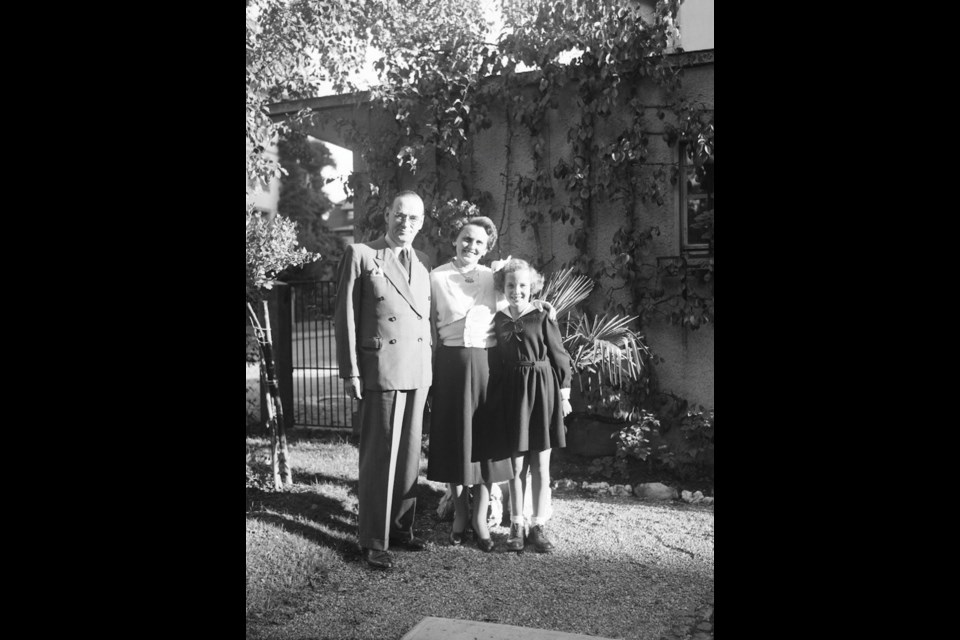A UVic scholar is illuminating one of the most unrecognized heroes of the Second World War, Carl Lutz, who saved an estimated minimum of 60,000 people from the Holocaust.
Charlotte Schallié, professor of Germanic studies at the University of Victoria and a member of the university’s Holocaust studies program, said it’s only in the past few years that Lutz’s story and the enormity of his humanitarian achievement are being recognized.
By contrast, Oskar Schindler (1908-1974) saved about 1,200 people and was remembered in the 1993 movie Schindler’s List. Estimates for the number of people saved by Lutz range from 60,000 to 72,000, making his work the largest single humanitarian rescue of the war.
“There has just never been a collective push from anyone to bring his name into the collective memory,” said Schallié.
She and Lutz’s stepdaughter, Agnes Hirschi, have just completed a book Under Swiss Protection: Jewish Eyewitness Accounts from Wartime Budapest. On Monday, she will present her work to the International Holocaust Remembrance Alliance in Bern, Switzerland.
Lutz (1895-1975) was a Swiss diplomat posted to Budapest during the Second World War. When Nazis and Hungarian fascists started rounding up Jews for transport to death camps, it became a personal moment for Lutz to do something.
Schallié said as a career diplomat Lutz always honoured and protected Swiss neutrality. But he was also a devout Methodist and believed 1942 Budapest was a time and place to take a moral stand.
He quietly used his skills as a diplomat and his insights into the mindset of Nazi bureaucrats to save people from being transported away to death camps.
“He knew and understood the bureaucratic mindset and he used it as a countermeasure,” said Schallié.
One of this best ruses was the issuance of diplomatic protective letters from the Swiss Embassy. Lutz first secured agreement from the Nazis that they would honour the letters. But the Germans insisted there could be no more than 8,000 handed out.
So, beginning in 1942, Lutz started issuing the letters with numbers, one to 7,999. Then he started all over again, one to 7,999 and so on and so on. He took the risk that no Nazi official would ever line up two letters with the same number.
Lutz organized and issued special Palestine certificates for 10,000 young people of the Zionist Youth movement.
He iissued and received approvals to establish 76 safe houses throughout Hungary, the most famous of which was an old glass factory, nicknamed the Glass House.
Schallié said Nazis and Hungarian fascists mostly honoured the safe designation of these houses. There were, however, times when fascists broke in, hauled people out and shot them by the shores of the River Danube.
After the war was over, Lutz returned home to Switzerland. But instead of being lionized as a hero he was handed a mild reprimand for exceeding his authority.
Schallié said it wasn’t until 1995 when a Swiss politician mentioned his name in a speech that Lutz received official recognition from his government.
Schallié herself, educated most of her life in Switzerland with a grandmother killed at Auschwitz, and a long interest in the Holocaust, only stumbled on Lutz’s name two years ago when she encountered a small monument in Budapest.
This lack of recognition would not surprise anyone raised in Switzerland, she said. The Swiss are a modest people who don’t call attention to themselves.
But it was that Swiss modesty that allowed Lutz to achieve his humanitarian master-stroke. “It was quintessentially Swiss the way he did it,” said Schallié. “He did it very quietly and he did it in the background.”



